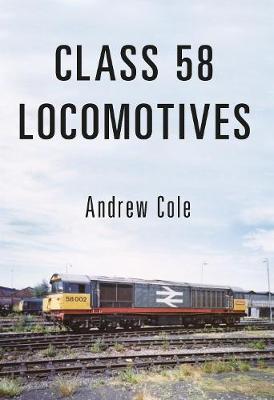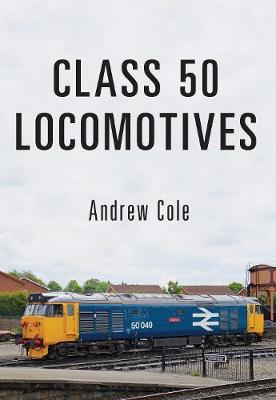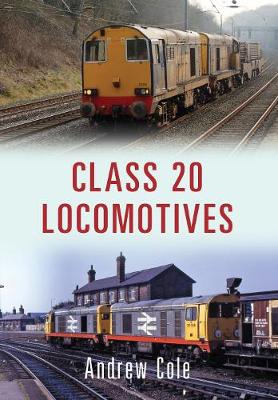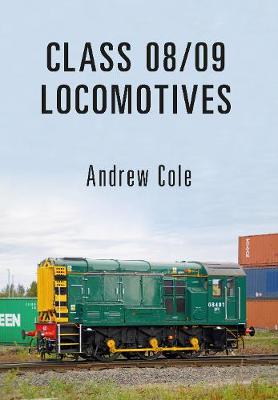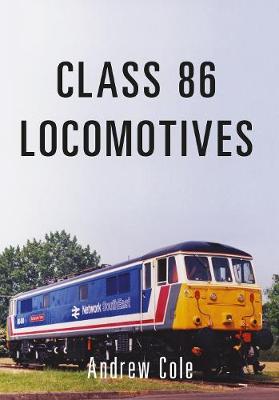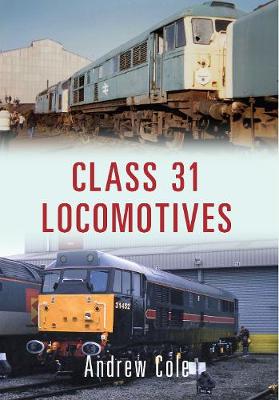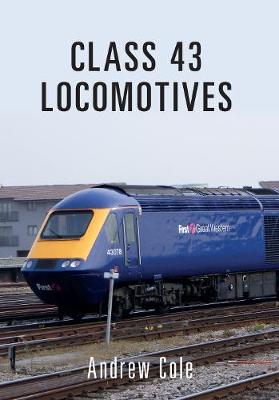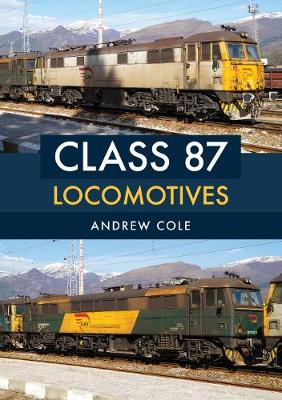Class Locomotives
10 total works
They were fitted with a Ruston Paxman 12RK3ACT prime mover, which proved very suitable for their main use on merry-go-round coal traffic. The only problem the class encountered was with wheelslip. No. 58050 was to become the last locomotive to be built at Doncaster, as no export orders were received for the class. All fifty of the class passed to mainline, and a few members received the blue livery before passing to EWS.
This was a class of loco that was withdrawn from service in the UK far too early, as the Canadian-built Class 66s replaced them. Only one member has been physically preserved, but in this book Andrew Cole pays tribute to the whole class with an array of period photographs and technically detailed captions.
Also built in Spain, the Class 68 locomotives were ordered by Direct Rail Services in 2012, with the first loco arriving in 2014. Thirty-four have so far been ordered so far, and are used on a variety of freight and also passenger workings, finding regular use with ScotRail and Chiltern. They will also soon be used by TransPennine Express.
This book shows the diversity of these two mainline classes.
They performed these duties until the first members of the class were transferred away to the Western Region in 1974. Here they eliminated the Class 52s from both passenger and also freight workings. All fifty locomotives eventually also found their way to the Western Region, and then from 1979 all members of the class visited Doncaster Works for a full refurbishment, which included repainting into large logo livery.
The first member of the class was withdrawn in 1987; by this time the class were split between Network South East and the Civil Engineers department. A large number of the class received Network South East livery before the final members of the class were withdrawn in 1994. Quite a sizeable number found their way into preservation, but unfortunately some were scrapped despite having already been saved for preservation.
The Class 50's fascinating history is explored in this volume through Andrew Cole's wonderful collection of images, which includes a shot of every single member of this popular class.
There are two different front-end designs, the first carry headcode discs on the cab-front and nose end, while the rest carry headcode boxes on both ends. They were mostly used on the Midland, Eastern and Scottish region, but did venture further afield.
Withdrawals started in the early 1980s, with most being taken out of traffic by the mid-1990s. Fifteen were sold on to DRS, who rebuilt them as Class 20/3, and most of these locos are still in service. Hunslet Barclay also operated six for use on weed-killing trains, but these were also later sold to DRS. Quite a number were preserved, and there are also a number in industrial service. Some are still main-line registered, the main contract being the delivery of London Underground stock.
The Class 20s were a success story from the beginning, and despite only being single-cabbed, they were regularly to be found running in pairs, making them far more efficient.
Fifty members of the class were built at Crewe Works, alongside the Class 91 locomotives that were built for the East Coast Main Line. The Class 90s were designed to be able to work with a Mk 3 DVT, which also eliminated the need to run round at terminal stations. The first twenty-five members were delivered in InterCity Swallow livery, the following eleven in InterCity Mainline livery, allowing them to be used on passenger and freight workings, with the final fourteen members delivered in Railfreight Speedlink livery being predominantly freight locomotives. Most of the class are still in use today, with fifteen still used on passenger workings out of Norwich and the remainder in use with DB Cargo or Freightliner.
This book tells the story of the Class 90s.
Just about every corner of the UK would be home to one or more of these shunting locomotives. They were ideal for yard and depot shunting, and also acted as station pilots at nearly every major station. The main difference between the two classes was that the Class 09 had a different maximum speed, and most were also fitted with extra air pipes to work with Southern Region EMUs.
With the constriction of UK freight workings, a lot of yards were taken out of use, and the trip workings that these locomotives performed soon ceased. With the advent of multiple unit trains, the need for them as station pilots also ceased. A large majority of the two classes have been withdrawn and scrapped, but a fair number still survive, doing what they were built for over fifty years ago. A large number have also entered preservation, and the classes have carried a multitude of different liveries over the years.
They were built for West Coast services, which had been electrified from London, and would eventually run all the way to Glasgow. They were delivered in Electric Blue livery, complete with cast lion and wheel. They were originally known as the AL6 Class but, under TOPS, became the Class 86s. They were originally numbered in the Class 86/0 series and the Class 86/2 number series, with the 86/2s used on passenger workings due to them being fitted with improved suspension, allowing them to run at 100 mph. Three of the Class 86/2s were used as test beds for the Class 87 development, being fitted with different bogies and becoming the Class 86/1 series. The class has also found passenger workings on the Great Eastern route from London to Norwich, eventually being replaced by Class 90s. They have also been useful engines on freight workings, with quite a few still in use with Freightliner.
Compiled with attention to detail and enthusiasm, Class 86 Locomotives tells the story of these locos in a comprehensive collection of photographs and annotation.
For those fortunate enough to have experienced the Class 31 locos in their prime, this book will offer a pleasing trip down memory lane. For those new to the class, it will highlight what you may have missed.
When built they were all fitted with the distinctive Paxman Valenta engine, but they have all been replaced with either Paxman VP185, or MTU engines. They have operated over all the former British Rail regions, although they were scarce on the Southern. The main operators currently are Great Western, East Midlands Trains, Virgin Trains East Coast, Grand Central and Cross Country Trains. The Great Western and East Coast trains already have their replacements on order, and it remains to be seen how long they will remain in service.
Just three power cars have been scrapped, and only then following high-profile accidents; a testament to how well the design would stand the test of time. Class 43 Locomotives pays tribute to this iconic class in a comprehensive series of photographs alongside detailed captions and annotation.
All were initially used on passenger work, but they could also be found on freight workings, being fitted with multiple working equipment from new. The whole class stayed on West Coast workings throughout the BR era and into privatisation, with all members, except for No. 87101, passing to Virgin Trains. The sole Class 87/1 passed to the Railfreight sector of BR and would eventually find its way into EWS ownership; it was scrapped in 2002.
When their work on the West Coast was at an end, twenty-one members of the class found further use in Bulgaria and three would be preserved, with the remainder being scrapped.
